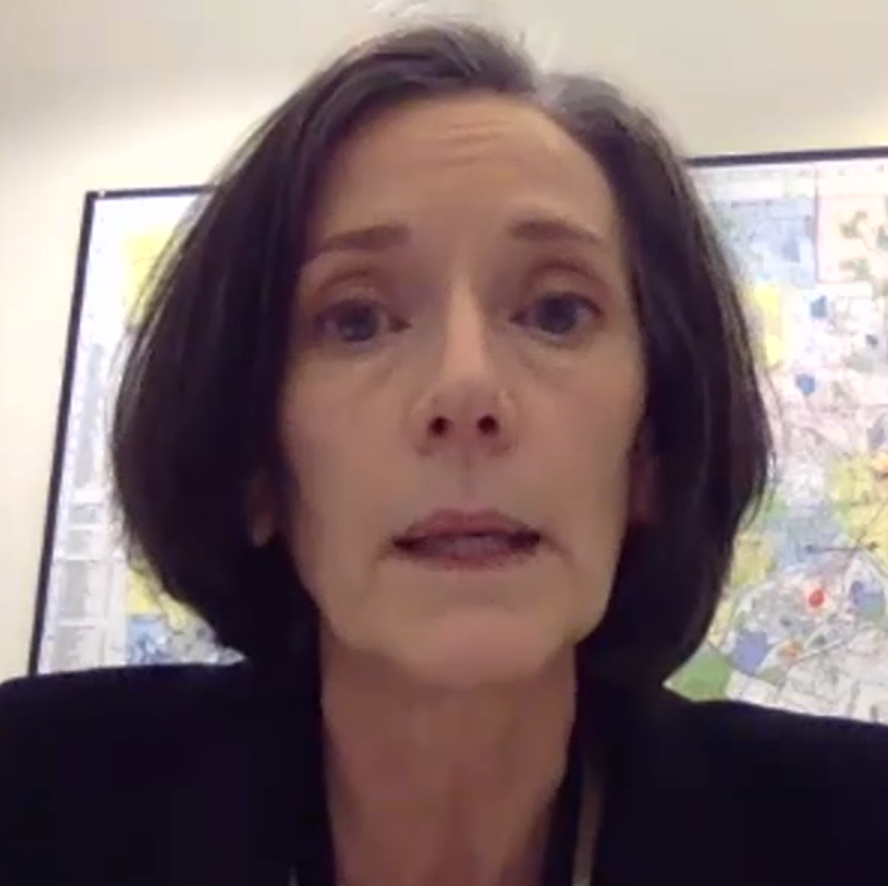Both Delaware and Bucks counties are hoping they can persuade Gov. Tom Wolf to exclude nursing home infection numbers when deciding which counties can begin reopening from the coronavirus shutdown.
But for anyone hoping that idea would spread to neighboring Montgomery County, it seems unlikely that officials there will be jumping on that bandwagon anytime soon.
During a Wednesday hearing by Democratic state senators, Montgomery County Commission Chairwoman Dr. Valerie Arkoosh said the idea troubled her “as a physician, on a number of moral and ethical planes.”
Currently, Wolf is using stoplight colors for three phases of reopening, with red being a continued closure, and yellow being a mixture of closed and open with restrictions. All counties in the Delaware Valley are still in the red.
In order to progress to yellow, a county’s infection rate must average less than “50 cases per 100,000 individuals over the course of 14 days.”
“For Delaware County, this would translate into roughly an average of 20 new cases per day over 14 days,” Delaware County Councilmember Kevin Madden said. In the last week, the county has seen 139 new cases per day, CBS3 in Philadelphia reported.
Bucks County commissioners, meanwhile, sent a letter to Wolf saying that as long as nursing home data is included, it could “permanently keep Bucks County in the ‘red zone.’”
Promoters of a revised metric argue the nursing home infections number can safely be separated because those infected weren’t exposed in the wider community, nor are they likely to infect others. But Arkoosh dismissed the idea.
“What is discounted when people say that, I think, is just the very basic understanding that many of these individuals do go to the hospital,” she told the Democratic lawmakers on a videoconference.
“So remember that’s a paramedic team that’s been exposed to COVID, and then obviously the hospital team that’s exposed to them as well,” she continued. “And then of course there’s our staff people that are going home to their families and to their communities every night. And by self report here in the county, we have over 500 staff that we have been told have been tested positive in our various congregate facilities across the county.”
In Bucks County, about 30 percent of the 3,508 COVID-19 cases come from nursing homes, long-term care facilities — or people who work there. It’s 28 percent in Delaware County, and 33 percent in Montgomery.
At the same time, there are many counties announced as moving to the “yellow” zone on May 8 where the number of nursing home infections is 10 or less, such as Centre, Clearfield, Erie, Lawrence and Mercer counties.
Arkoosh did signal some willingness to look at nursing home data differently.
“I do think it may be appropriate to look at their rate of infection, and then decline of that infection, and how it compares to the community and the hospital utilization rates of that particular population and we may find and learn over time that maybe their hospitalization rates are different than the community,” she said.
She also felt “everyone’s been way too caught up” in the administration’s “50 cases per 100,000 metric,” and said that was just one of several factors under consideration for a county to progress from red to yellow.
A spokeswoman for Wolf had a similar response for Delaware Valley Journal when asked about the requests from Bucks County.
“As noted in the plan, a variety of metrics must be met before reopening a region,” Lyndsay Kensinger spokeswoman said. “We look forward to working with state and local officials to build testing and contact tracing capabilities to prepare the community to transition to yellow.”
Arkoosh also approached the idea from a more emotional angle.
“I believe that these individuals should be counted. First of all, they’re human beings. They are our parents, our grandparents, our brothers, sisters, aunts, and uncles. And I worry about someone ever saying someone shouldn’t be counted.”
At a Wednesday news conference, Pennsylvania Health Secretary Rachel Levine echoed those comments, saying that nursing homes were “part of the mix of a community, the cases that are in those facilities are part of the communities,” and seemed to reject the idea for the administration.

